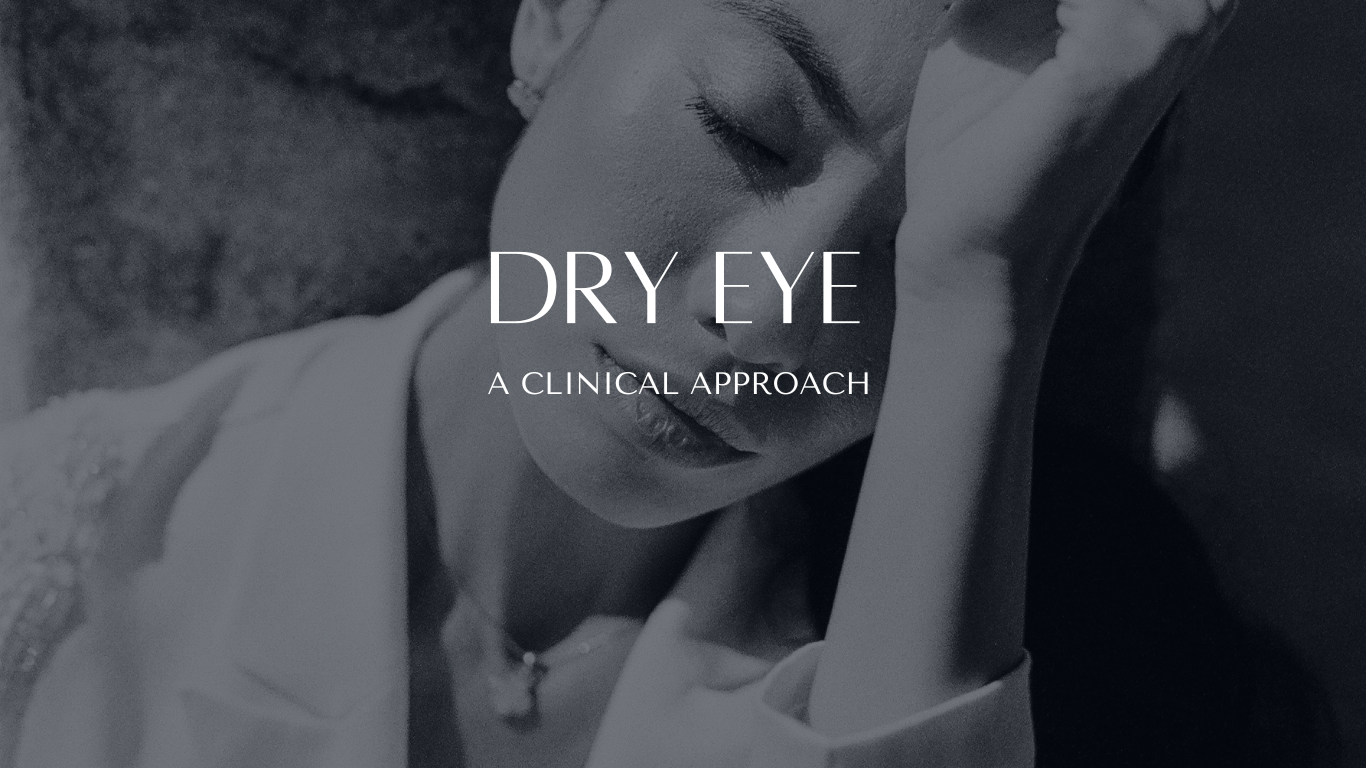
Dry Eye; A Clinical Approach
Assessing the Short-Term Effects of Pellucid+™ Eye Spray Versus Traditional Eye Drops on Ocular Quality of Life Metrics: A Comparative Study
DNC Fundamentals Sdn Bhd, Kuala Lumpur, Malaysia
- Introduction
This comparative study aims to evaluate the efficacy of Pellucid+™ Eye Spray in alleviating dry eyes and its associated symptoms. The study was conducted on a group of participants suffering from dry eyes to compare the effects before and after using Pellucid+™ Eye Spray in comparison to traditional eye drops.
- Abstract
Dry eye disease (DED) is a multifactorial ocular condition impacting patients' quality of life. The mainstay treatment involves the use of artificial tear products (ATPs). This review presents a novel approach using Pellucid+™ Eye Spray with ARTech™, aimed at effectively managing DED compared to traditional eye drops. This study aims to evaluate the short-term effects of Pellucid+™ Eye Spray versus traditional eye drops on ocular quality of life metrics, specifically focusing on dry eye symptoms and intraocular eye pressure (IOP) reduction.
- Methodology
3.1 Participants:
A total of 200 participants (100 males and 100 females) aged between 18 and 60 years were enrolled in the study. All participants had a history of dry eye symptoms or associated dry eye problems; and were divided randomly into two groups: Group A (Pellucid+™ Eye Spray users) and Group B (traditional eye drop users).
3.2 Procedure:
- Each participant underwent an initial eye questionnaire to determine baseline dry eye symptoms
- Participants in Group A were provided with Pellucid+™ Eye Spray and instructed to use it as per the recommended dosage
- Participants in Group B were provided with a commercially available traditional eye drop containing similar ingredients, except for ARTech™, and were instructed to use it as per the product's guidelines.
- The study duration was set at 2 weeks, and an intermittent test is done after the 1st week of use
3.3 Participant Flow:
Recruitment details
200 dry eye subjects randomised between gender and age
Pre-Assignment details
Randomized, comparative study
|
Arm/Group Title |
Pellucid+™ Eye Spray |
Traditional Eye Drops |
|
Arm/Group Description |
Pellucid+™ Eye Spray 1 spray each eye 4 times daily for 2 weeks |
Traditional Eye Drops 1 drop each eye 4 times daily for 2 weeks |
Period Title: Overall Study
|
Started |
100 |
100 |
|
Completed |
89 |
85 |
|
Not Completed |
11 |
15 |
3.4 Assessment Criteria:
Participants were evaluated before and after the study period based on the following parameters: a. Dry eye symptoms: Measured using standardized dry eye questionnaires (e.g., OSDI - Ocular Surface Disease Index and SPEED™ Standard Patient Evaluation of Eye Dryness Questionnaire). b. Intra-Ocular Eye Pressure: Measured by getting the reading of the eye pressure using tonometry test at baseline, after 20 minutes of product application, and at the end of first and second weeks.
- Results
4.1 Dry Eye Symptom Relief
After 2 weeks of product usage, participants in Group A (Pellucid+™ Eye Spray) reported a significant reduction in dry eye symptoms compared to those in Group B (traditional eye drop users). The OSDI scores decreased by an average of 86% in Group A, indicating substantial symptom relief, while Group B showed only a 20% decrease.
4.2 Intra-Ocular Eye Pressure (IOP) Reduction
Pellucid+™ Eye Spray users exhibit significant decrease in IOP from before the use of Pellucid+™ Eye Spray and after 20 minutes of one spray on each eye, while traditional eye drops showed minimal change.
|
IOP, mmHg |
Pellucid+™ Eye Spray |
Traditional Eye Drops |
|
IOP at baseline |
22.1 ± 8.2 (100) |
22.1 ± 8.2 (100) |
|
IOP after 20 minutes use |
21.1 ± 8.2 (100) |
22 ± 8.2 (100) |
|
IOP at Week 1 |
20.1 ± 7.9 (95) |
21.1 ± 8.1 (99) |
|
IOP at Week 1 after 20 minutes use |
18.9 ± 7.9 (95) |
21.0 ± 8.1 (99) |
|
IOP at Week 2 |
19.6 ± 7.1 (89) |
20.1 ± 6.8 (85) |
|
IOP at Week 2 after 20 minutes use |
16.1 ± 7.1 (89) |
20.0 ± 6.8 (85) |
Change in intraocular pressure overall and according to study groups. All values at specific timepoint as indicated in the table and are presented as mean ± standard deviation. Significant reductions in IOP with Pellucid+™ Eye Spray after 20 minutes of spray were observed amongst the group verses traditional eye drops. However the magnitude of the change is even greater after 2 weeks of Pellucid+™ Eye Spray and when compared to baseline IOP values.
- Discussion
Dry Eye Symptoms severity of OSDI are measured as below:
A score between 0 and 12 is considered normal, while a score between 13 and 22 represents a mild disease, between 23 and 32 is moderate Dry Eye Disease, and any number between 33 and 100 is indicative of severe Dry Eye Disease.
Dry Eye Symptoms severity of SPEED™ are measures as below:
A score between 0 and 4 is represents a mild disease, between 5 and 7 is moderate Dry Eye Disease, and any number above 8+ is indicative of severe Dry Eye Disease.
Dry eye symptoms which usually affect both eyes may include a stinging, burning or scratchy sensation in your eyes, stringy mucus in or around your eyes, sensitive to light, eye redness, a sensation of having something in your eyes, difficulty wearing contact lenses, difficulty driving at night, watery eyes, blurred vision, eye fatigue, etc.
Dry eyes are caused by a variety of reasons that disrupt the healthy tear film. Your tear film has three layers: fatty oils, aqueous fluid and mucus. This combination usually keeps the surface of your eyes lubricated, smooth and clear. Problems with any of these layers can cause dry eyes.
Reasons for tear film dysfunction are many, including hormone changes, autoimmune disease, inflamed eyelid glands or allergic eye disease. For some people, the cause of dry eyes is decreased tear production or increased tear evaporation.
During this comparative studies, we did not put into consideration of aging, medical conditions including Sjogren’s syndrome, allergic eye disease, rheumatoid arthritis, lupus, scleroderma, thyroid or Vitamin A deficiency; and treated the study as a whole general population. We also did not consider the risk factor of dry eyes such as being older than 50 years old, being a woman, being low on Vitamin A diet or low omega diet, or having any refractive surgery.
There are a total dropout of 26 people among them 14 are male and 2 are female. The reasons for the dropout, is still an unknown factor but could be due to reasons where male are have lower tendency to care for themselves in terms of health behaviour (as per US survey conducted by the Cleveland Clinic). 2 among the dropouts
The normal intraocular eye pressures average from 12-21 mm Hg. The “mm Hg” refers to millimetres of mercury, a scale for recording eye pressure. Anything that exceeds 21 mm Hg is considered hypertensive. The reason for testing the IOP is to check if the eye is able to drain aqueous humour properly, indicating if the eye is blocked due to dry eye or other reasons. Inability to drain causes the eye pressure to increase causing eye complications in future especially glaucoma.
This study has a number of limitations, which are intrinsic with open-label studies. Limitations include the variation in time of use of the products, age, gender, ethnicity, underlying medical conditions and target IOP, which are at the discretion of the physician. Also, the questionnaire collected are of very limited evaluation. Allergy tests are not performed during the weekly results tabulation. Finally, as this studies only included voluntary patients from Malaysia, the generalizability of the outcomes to individuals of other ethnicities is limited.
- Conclusion
The results of this comparative clinical study demonstate that Pellucid+™ Eye Spray outperforms traditional eye drops in alleviating dry eye symptoms, and also in terms of reduction in Intraocular eye pressure. The innovative inclusion of ARTech™ in the formulation of Pellucid+™ Eye Spray allows it to help manage dry eyes symptoms, IOP reduction and provide more comprehensive relief. These findings suggest that Pellucid+™ Eye Spray could be more effective solutions for individuals suffering from dry eyes compared to conventional eye drops.
However, further studies with larger sample size and more restrictive age, gender and ethnicity and longer durations are recommended to strengthen these findings and evaluate the long-term effects of Pellucid+™ Eye Spray usage.
For more information and testimonials, please visit dncpellucid.com
References
- American Academy of Ophthalmology. Dry Eye Syndrome Questionnaires. Dry Eye Disease scoring of OSDI Questionnaire https://www.bergfeinfield.com/wp-content/uploads/OSDI-questionnaire.pdf
- American Academy of Ophthalmology. Dry Eye Syndrome Questionnaires. Standardised Eye Dryness Questionnaire scoring SPEED https://eyewiki.aao.org/File:Official_SPEED_Questionnaire_copy.png
- Mayo Clinic. Dry Eyes. https://www.mayoclinic.org/diseases-conditions/dry-eyes/symptoms-causes/syc-20371863
- Cleveland Clinic. Eye (Intraocular) Pressure. https://my.clevelandclinic.org/health/symptoms/24552-eye-intraocular-pressure#:~:text=Your%20eye%20producing%20too%20much,from%20some%20medications%2C%20especially%20corticosteroids.
- American Academy of Opthalmology. Eye Pressure Testing by Kierstan Boyd
- Advances in Therapy. Lowering effects of Intraocular Pressure benefits patient in long run. Tanihara et al
- National Library of Medicine. Pubmed Central. Open-label placebo clinical trials. Locher et al


